Liqing Zhang
LLM4Cell: A Survey of Large Language and Agentic Models for Single-Cell Biology
Oct 09, 2025Abstract:Large language models (LLMs) and emerging agentic frameworks are beginning to transform single-cell biology by enabling natural-language reasoning, generative annotation, and multimodal data integration. However, progress remains fragmented across data modalities, architectures, and evaluation standards. LLM4Cell presents the first unified survey of 58 foundation and agentic models developed for single-cell research, spanning RNA, ATAC, multi-omic, and spatial modalities. We categorize these methods into five families-foundation, text-bridge, spatial, multimodal, epigenomic, and agentic-and map them to eight key analytical tasks including annotation, trajectory and perturbation modeling, and drug-response prediction. Drawing on over 40 public datasets, we analyze benchmark suitability, data diversity, and ethical or scalability constraints, and evaluate models across 10 domain dimensions covering biological grounding, multi-omics alignment, fairness, privacy, and explainability. By linking datasets, models, and evaluation domains, LLM4Cell provides the first integrated view of language-driven single-cell intelligence and outlines open challenges in interpretability, standardization, and trustworthy model development.
MoXGATE: Modality-aware cross-attention for multi-omic gastrointestinal cancer sub-type classification
Jun 08, 2025Abstract:Cancer subtype classification is crucial for personalized treatment and prognostic assessment. However, effectively integrating multi-omic data remains challenging due to the heterogeneous nature of genomic, epigenomic, and transcriptomic features. In this work, we propose Modality-Aware Cross-Attention MoXGATE, a novel deep-learning framework that leverages cross-attention and learnable modality weights to enhance feature fusion across multiple omics sources. Our approach effectively captures inter-modality dependencies, ensuring robust and interpretable integration. Through experiments on Gastrointestinal Adenocarcinoma (GIAC) and Breast Cancer (BRCA) datasets from TCGA, we demonstrate that MoXGATE outperforms existing methods, achieving 95\% classification accuracy. Ablation studies validate the effectiveness of cross-attention over simple concatenation and highlight the importance of different omics modalities. Moreover, our model generalizes well to unseen cancer types e.g., breast cancer, underscoring its adaptability. Key contributions include (1) a cross-attention-based multi-omic integration framework, (2) modality-weighted fusion for enhanced interpretability, (3) application of focal loss to mitigate data imbalance, and (4) validation across multiple cancer subtypes. Our results indicate that MoXGATE is a promising approach for multi-omic cancer subtype classification, offering improved performance and biological generalizability.
Interpretable and Reliable Detection of AI-Generated Images via Grounded Reasoning in MLLMs
Jun 08, 2025Abstract:The rapid advancement of image generation technologies intensifies the demand for interpretable and robust detection methods. Although existing approaches often attain high accuracy, they typically operate as black boxes without providing human-understandable justifications. Multi-modal Large Language Models (MLLMs), while not originally intended for forgery detection, exhibit strong analytical and reasoning capabilities. When properly fine-tuned, they can effectively identify AI-generated images and offer meaningful explanations. However, existing MLLMs still struggle with hallucination and often fail to align their visual interpretations with actual image content and human reasoning. To bridge this gap, we construct a dataset of AI-generated images annotated with bounding boxes and descriptive captions that highlight synthesis artifacts, establishing a foundation for human-aligned visual-textual grounded reasoning. We then finetune MLLMs through a multi-stage optimization strategy that progressively balances the objectives of accurate detection, visual localization, and coherent textual explanation. The resulting model achieves superior performance in both detecting AI-generated images and localizing visual flaws, significantly outperforming baseline methods.
Towards Explainable Fake Image Detection with Multi-Modal Large Language Models
Apr 19, 2025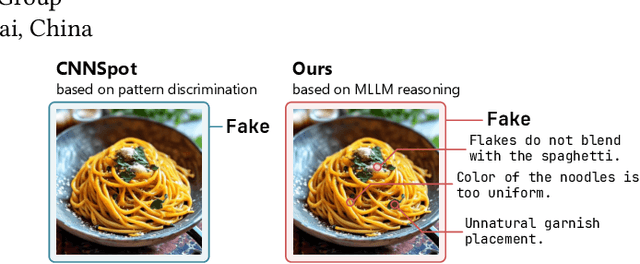
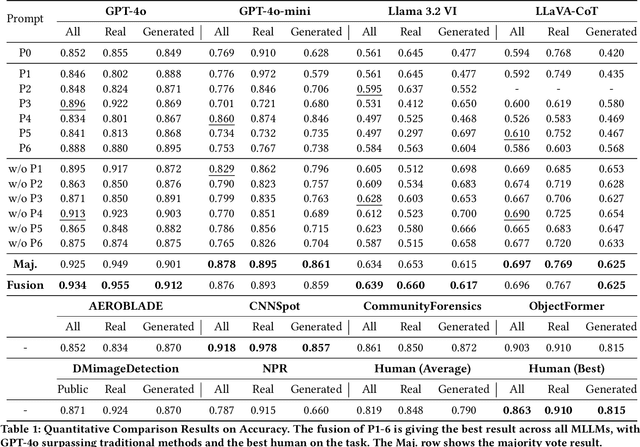
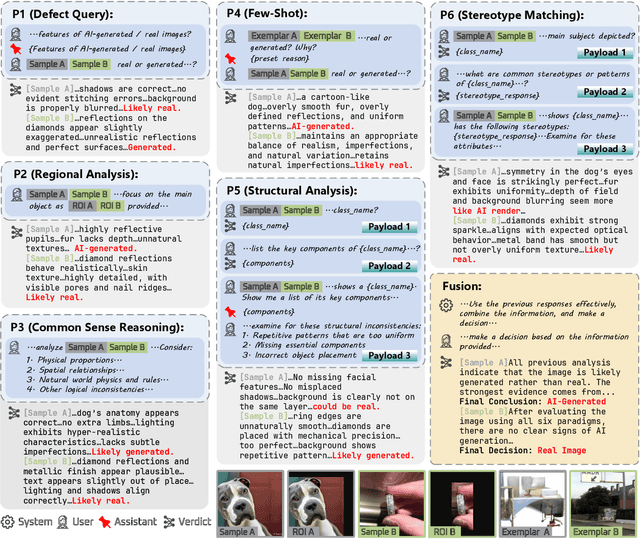
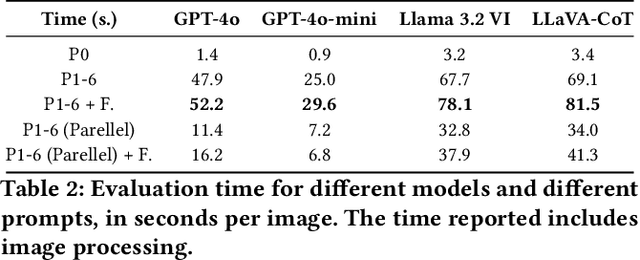
Abstract:Progress in image generation raises significant public security concerns. We argue that fake image detection should not operate as a "black box". Instead, an ideal approach must ensure both strong generalization and transparency. Recent progress in Multi-modal Large Language Models (MLLMs) offers new opportunities for reasoning-based AI-generated image detection. In this work, we evaluate the capabilities of MLLMs in comparison to traditional detection methods and human evaluators, highlighting their strengths and limitations. Furthermore, we design six distinct prompts and propose a framework that integrates these prompts to develop a more robust, explainable, and reasoning-driven detection system. The code is available at https://github.com/Gennadiyev/mllm-defake.
High-Quality 3D Head Reconstruction from Any Single Portrait Image
Mar 11, 2025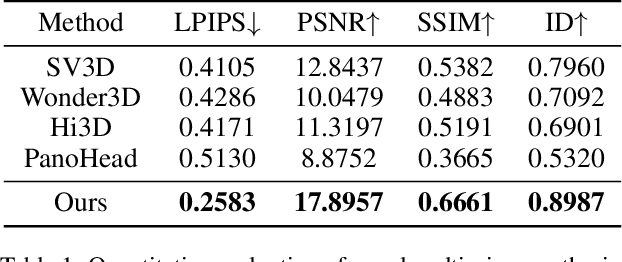
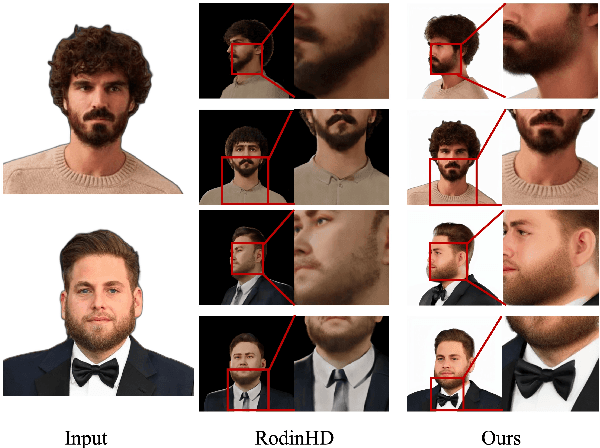
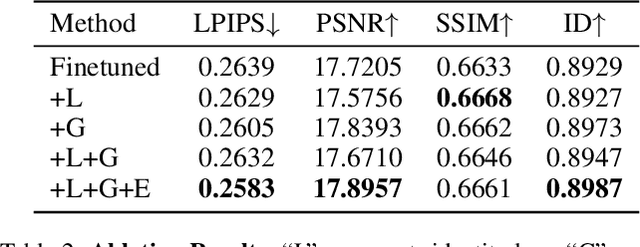
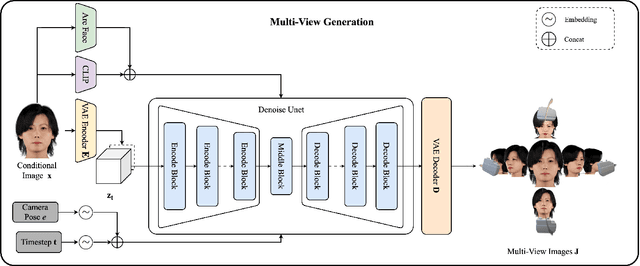
Abstract:In this work, we introduce a novel high-fidelity 3D head reconstruction method from a single portrait image, regardless of perspective, expression, or accessories. Despite significant efforts in adapting 2D generative models for novel view synthesis and 3D optimization, most methods struggle to produce high-quality 3D portraits. The lack of crucial information, such as identity, expression, hair, and accessories, limits these approaches in generating realistic 3D head models. To address these challenges, we construct a new high-quality dataset containing 227 sequences of digital human portraits captured from 96 different perspectives, totalling 21,792 frames, featuring diverse expressions and accessories. To further improve performance, we integrate identity and expression information into the multi-view diffusion process to enhance facial consistency across views. Specifically, we apply identity- and expression-aware guidance and supervision to extract accurate facial representations, which guide the model and enforce objective functions to ensure high identity and expression consistency during generation. Finally, we generate an orbital video around the portrait consisting of 96 multi-view frames, which can be used for 3D portrait model reconstruction. Our method demonstrates robust performance across challenging scenarios, including side-face angles and complex accessories
RHINO: Learning Real-Time Humanoid-Human-Object Interaction from Human Demonstrations
Feb 18, 2025



Abstract:Humanoid robots have shown success in locomotion and manipulation. Despite these basic abilities, humanoids are still required to quickly understand human instructions and react based on human interaction signals to become valuable assistants in human daily life. Unfortunately, most existing works only focus on multi-stage interactions, treating each task separately, and neglecting real-time feedback. In this work, we aim to empower humanoid robots with real-time reaction abilities to achieve various tasks, allowing human to interrupt robots at any time, and making robots respond to humans immediately. To support such abilities, we propose a general humanoid-human-object interaction framework, named RHINO, i.e., Real-time Humanoid-human Interaction and Object manipulation. RHINO provides a unified view of reactive motion, instruction-based manipulation, and safety concerns, over multiple human signal modalities, such as languages, images, and motions. RHINO is a hierarchical learning framework, enabling humanoids to learn reaction skills from human-human-object demonstrations and teleoperation data. In particular, it decouples the interaction process into two levels: 1) a high-level planner inferring human intentions from real-time human behaviors; and 2) a low-level controller achieving reactive motion behaviors and object manipulation skills based on the predicted intentions. We evaluate the proposed framework on a real humanoid robot and demonstrate its effectiveness, flexibility, and safety in various scenarios.
DomainGallery: Few-shot Domain-driven Image Generation by Attribute-centric Finetuning
Nov 07, 2024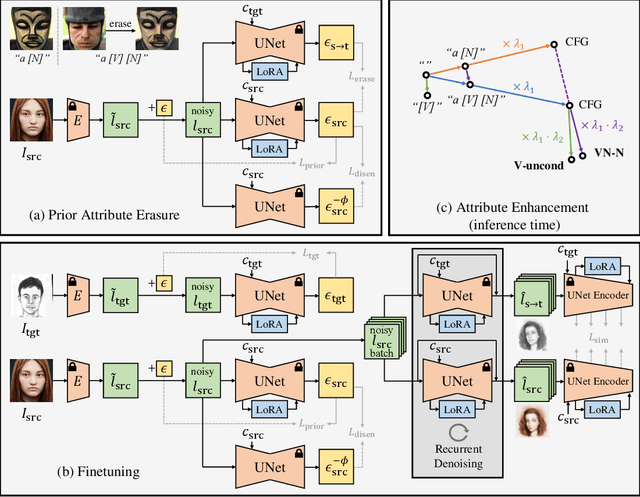
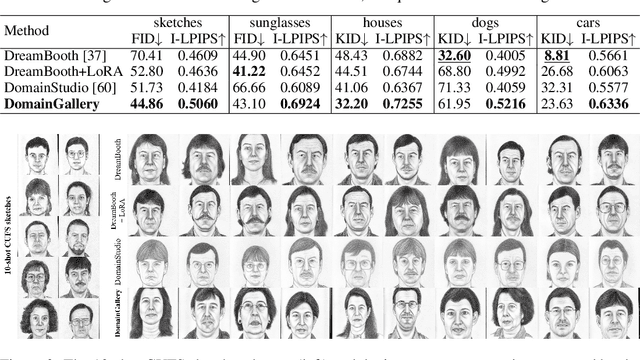
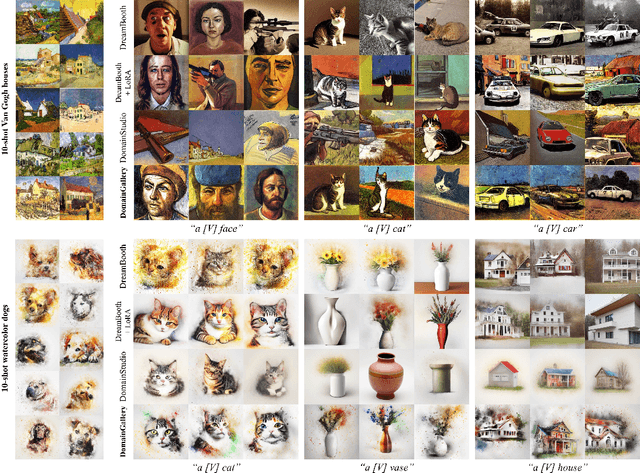
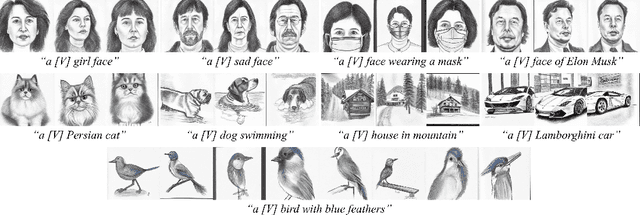
Abstract:The recent progress in text-to-image models pretrained on large-scale datasets has enabled us to generate various images as long as we provide a text prompt describing what we want. Nevertheless, the availability of these models is still limited when we expect to generate images that fall into a specific domain either hard to describe or just unseen to the models. In this work, we propose DomainGallery, a few-shot domain-driven image generation method which aims at finetuning pretrained Stable Diffusion on few-shot target datasets in an attribute-centric manner. Specifically, DomainGallery features prior attribute erasure, attribute disentanglement, regularization and enhancement. These techniques are tailored to few-shot domain-driven generation in order to solve key issues that previous works have failed to settle. Extensive experiments are given to validate the superior performance of DomainGallery on a variety of domain-driven generation scenarios. Codes are available at https://github.com/Ldhlwh/DomainGallery.
Align and Aggregate: Compositional Reasoning with Video Alignment and Answer Aggregation for Video Question-Answering
Jul 03, 2024Abstract:Despite the recent progress made in Video Question-Answering (VideoQA), these methods typically function as black-boxes, making it difficult to understand their reasoning processes and perform consistent compositional reasoning. To address these challenges, we propose a \textit{model-agnostic} Video Alignment and Answer Aggregation (VA$^{3}$) framework, which is capable of enhancing both compositional consistency and accuracy of existing VidQA methods by integrating video aligner and answer aggregator modules. The video aligner hierarchically selects the relevant video clips based on the question, while the answer aggregator deduces the answer to the question based on its sub-questions, with compositional consistency ensured by the information flow along question decomposition graph and the contrastive learning strategy. We evaluate our framework on three settings of the AGQA-Decomp dataset with three baseline methods, and propose new metrics to measure the compositional consistency of VidQA methods more comprehensively. Moreover, we propose a large language model (LLM) based automatic question decomposition pipeline to apply our framework to any VidQA dataset. We extend MSVD and NExT-QA datasets with it to evaluate our VA$^3$ framework on broader scenarios. Extensive experiments show that our framework improves both compositional consistency and accuracy of existing methods, leading to more interpretable real-world VidQA models.
* 10 pages,CVPR
PathoLM: Identifying pathogenicity from the DNA sequence through the Genome Foundation Model
Jun 19, 2024Abstract:Pathogen identification is pivotal in diagnosing, treating, and preventing diseases, crucial for controlling infections and safeguarding public health. Traditional alignment-based methods, though widely used, are computationally intense and reliant on extensive reference databases, often failing to detect novel pathogens due to their low sensitivity and specificity. Similarly, conventional machine learning techniques, while promising, require large annotated datasets and extensive feature engineering and are prone to overfitting. Addressing these challenges, we introduce PathoLM, a cutting-edge pathogen language model optimized for the identification of pathogenicity in bacterial and viral sequences. Leveraging the strengths of pre-trained DNA models such as the Nucleotide Transformer, PathoLM requires minimal data for fine-tuning, thereby enhancing pathogen detection capabilities. It effectively captures a broader genomic context, significantly improving the identification of novel and divergent pathogens. We developed a comprehensive data set comprising approximately 30 species of viruses and bacteria, including ESKAPEE pathogens, seven notably virulent bacterial strains resistant to antibiotics. Additionally, we curated a species classification dataset centered specifically on the ESKAPEE group. In comparative assessments, PathoLM dramatically outperforms existing models like DciPatho, demonstrating robust zero-shot and few-shot capabilities. Furthermore, we expanded PathoLM-Sp for ESKAPEE species classification, where it showed superior performance compared to other advanced deep learning methods, despite the complexities of the task.
Self-Supervised Vision Transformer for Enhanced Virtual Clothes Try-On
Jun 15, 2024Abstract:Virtual clothes try-on has emerged as a vital feature in online shopping, offering consumers a critical tool to visualize how clothing fits. In our research, we introduce an innovative approach for virtual clothes try-on, utilizing a self-supervised Vision Transformer (ViT) coupled with a diffusion model. Our method emphasizes detail enhancement by contrasting local clothing image embeddings, generated by ViT, with their global counterparts. Techniques such as conditional guidance and focus on key regions have been integrated into our approach. These combined strategies empower the diffusion model to reproduce clothing details with increased clarity and realism. The experimental results showcase substantial advancements in the realism and precision of details in virtual try-on experiences, significantly surpassing the capabilities of existing technologies.
 Add to Chrome
Add to Chrome Add to Firefox
Add to Firefox Add to Edge
Add to Edge